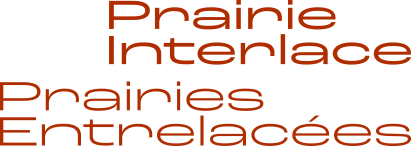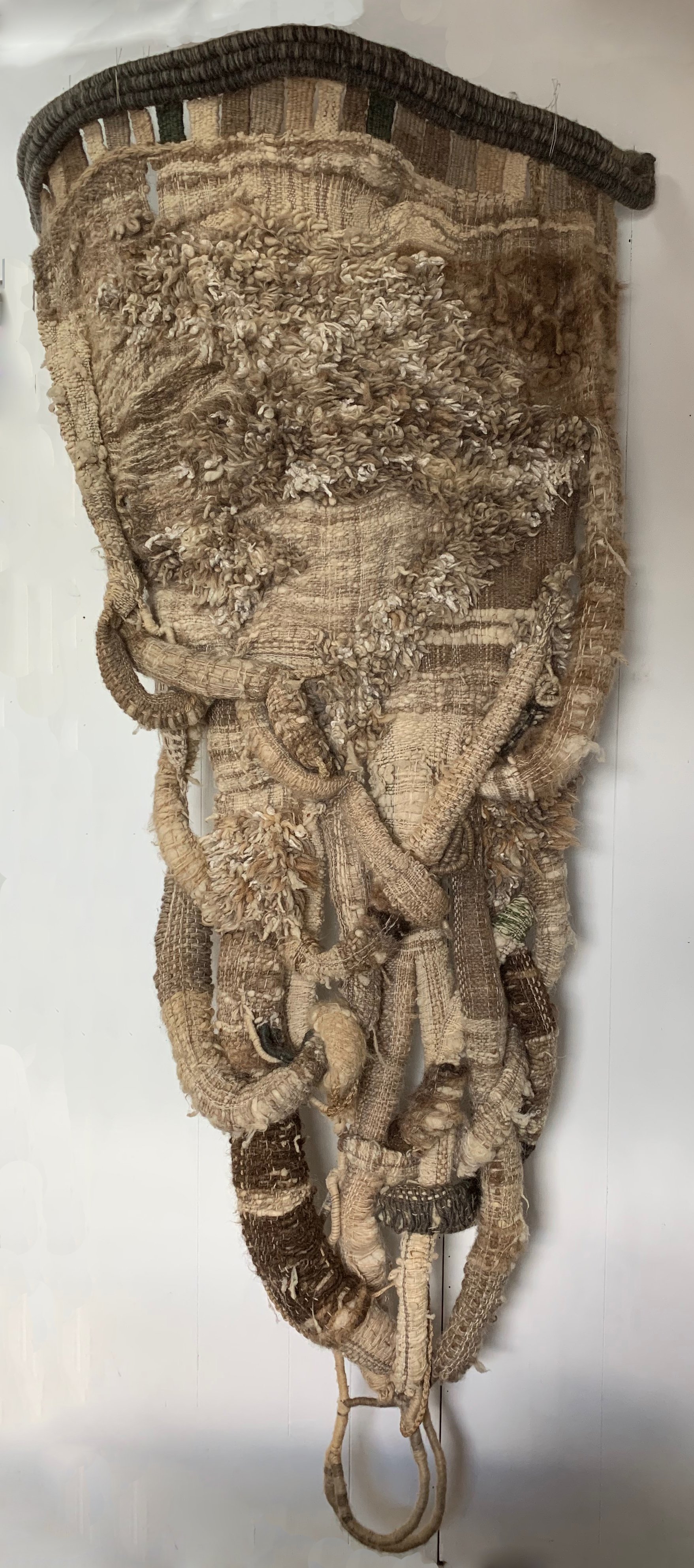|||||
PRAIRIE INTERLACE: INTRODUCTION
|||||
Prairie Interlace: Weaving, Modernisms and the Expanded Frame, 1960–2000 looks back to the explosion of innovative textile-based art on the Canadian prairies during the second half of the twentieth century.
With a focus on weaving and other interlace practices, such as rug hooking and crochet, the exhibition examines how artists of diverse backgrounds wove new histories of fibre during a period of intense energy and collective creativity. This touring exhibition, a collaboration between Nickle Galleries (Calgary, AB) and the MacKenzie Art Gallery (Regina, SK), features sixty artworks by forty-eight artists and draws on public and private collections from across Canada.
The warp and weft of this history are held taut by a number of creative tensions. Prairie weavers and other textile-based artists, like their ceramist counterparts, challenged traditional craft definitions and engaged with painting, sculpture, and architecture. Internationally, interest in experimental approaches to fibre art and weaving reached its highwater mark, led by the influential Lausanne International Tapestry Biennials (1961–1995), MoMA’s Wall Hangings exhibition (1969), and publications such as Mildred Constantine and Jack Lenor Larsen’s Beyond Craft: The Art Fabric (1972). New ideas were brought home and disseminated by prairie artists traveling on the international stage, as well as through the steady stream of international luminaries who led workshops at the Banff Centre, a major fibre hub. Like artists, craftspeople, and architects throughout Europe and North America, prairie artists were drawn to the warmth, materiality, and experimental potential of innovative weaving processes.
Yet the story cannot be reduced to a simple modernist narrative of a break with tradition leading to new liberatory possibilities. The persistence of techniques as taught in art schools and weaving guilds, the cultural knowledge brought to the prairies by European immigrants, and the renewed interest in traditional Indigenous practices, entwined with the modernist storyline. Feminist artists found in weaving, crochet, and other fibre arts a means to critique social and aesthetic hierarchies and expand the domestic frame. Indigenous artists found opportunities through rug hooking and weaving to pursue economic opportunities while celebrating aesthetic and cultural traditions. Interest was diffuse and diverse, encompassing both academic institutions in large cities and weaving guilds in smaller centres, monumental commissions for modernist towers and small-scale works produced on kitchen looms. Across the region, hubs of teaching and exchange emerged—the Alberta College of Art (now AUArts) in Calgary, the Banff Centre, the Saskatchewan School for the Arts in Fort Qu’Appelle, and numerous local guilds and clubs—where skills were honed and modernist ideas tested and translated.
Prairie Interlace retells this distinctive history through the interlaced narratives of art, craft, feminism, immigration, Indigeneity, regionalism, and architectural interior design. Borrowing the words of craft historian, Tanya Harrod, the goal is to recover and record “lost modernisms” connected with craft processes and the objects made largely by prairie women, newcomers, and Indigenous artists. The project, which includes a symposium, website, and publication, connects generations of artists, artists’ groups, guilds, scholars, and collectors and allows them to share their inspiring stories. It also allows us to appreciate, once more, how beautifully the artists wove into every fibre of their extraordinary works what they value about art, craft, history, culture, politics, and the land.
Michele Hardy, Julia Krueger, Timothy Long
Exhibition curators








